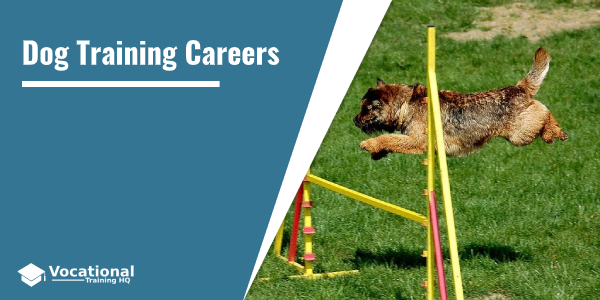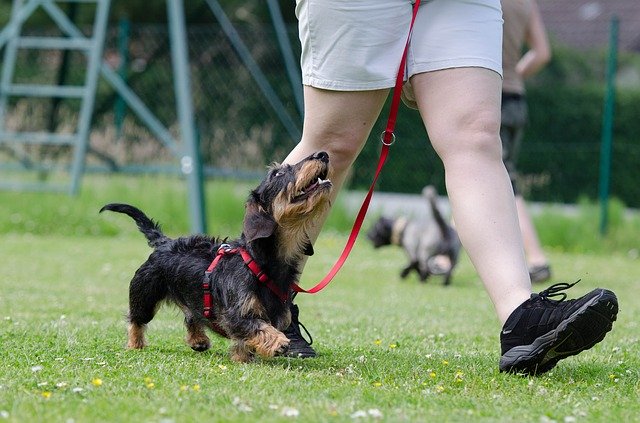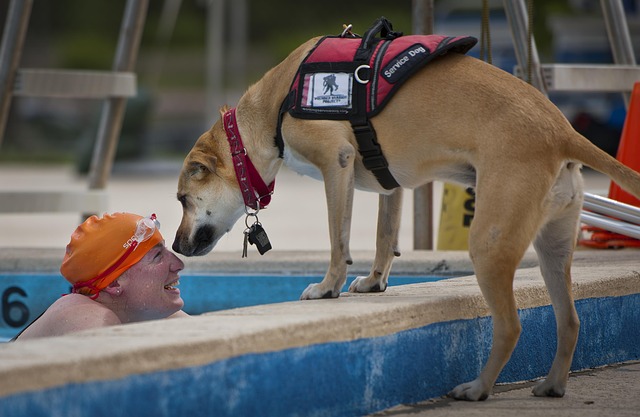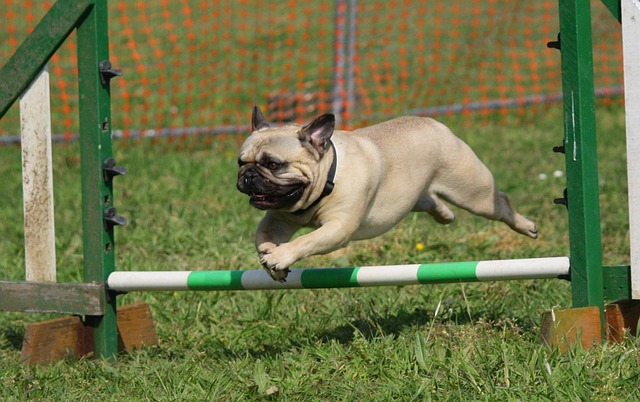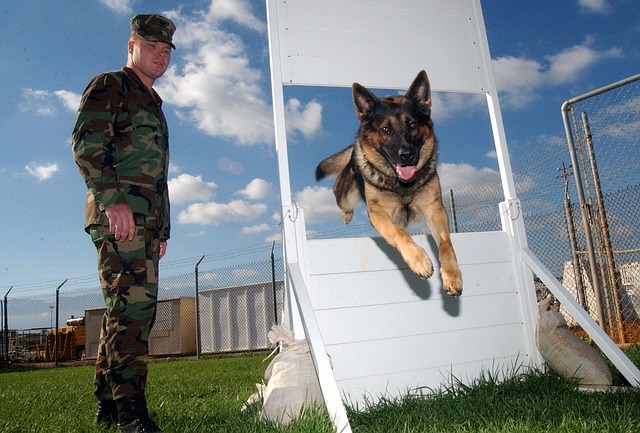It is estimated that dogs have intelligence equivalent to a 2-year-old, according to Live Science Managing Editor Jeanna Bryner.
As language development tests demonstrate, average dogs can learn 165 words (like a 2-year-old child), including gestures and signals.
It is believed that the top 20% of dogs have above-average intelligence and can learn 250 words.
Dog obedience training is based on research that includes reed-special characteristics, canine behavior, and positive, consistent messages.
As a puppy grows, they learn the basics of simply being a dog from their mother, in the first place.
Grooming, nurturing, and teaching by example and playing allows them to learn how to feed themselves, fend for themselves, and their place in the pack hierarchy.
Without human interaction, dogs that were domesticated turn back to their instincts and become feral and running in packs like their ancestors, wolves.
Humans and dogs can have a complex yet fascinating relationship.
Dogs have been attached to humans for centuries.
Their place in history is well-sealed with acts of bravery and courage on behalf of humans they consider theirs.
Based on a breed, dogs can be companions, protectors, hunters, workers.
Despite the breed, all dogs need consistent training and continual learning to bring out their potential.
Similar to children, dogs respond the best to clear boundaries.
While dogs may have an innate desire to please, they have to know exactly what they can and can’t do and what the limits are.
Training in these boundaries includes public obedience, basic etiquette, and following detailed, complex commands.
Article Table of Contents
Puppy Kindergarten
Housebreaking, socialization, and learning to follow basic commands are the three main areas that puppy kindergarten teaches.
Socialization includes both interaction with other dogs and learning to behave around new and different people.
The personalities of dogs are shown early, so it becomes clear if they demonstrate any fearful or aggressive behavior that needs to be worked on.
Dog trainers agree that humans also learn to train and handle their dogs.
For instance, housebreaking includes the experienced trainer spelling out strategies, techniques, tricks, and tips, but the owner is the one responsible for following them through consistently every day.
Basic commands include sit, stop, and lay down.
Since leash training is a primary goal of puppy kindergarten, it is introduced early.
Every public place or community has leash laws that will be enforced.
Breed-Specific Dog Obedience Training
Besides basic instructions dogs learn in obedience training, there is specialty training that depends on what the dog is bred for.
The dog obedience trainer needs to know what instructional behaviors relate to a specific breed.
Techniques and approaches heavily depend on what kind of dog is trained and what the purpose of training is.
According to the Dog Owner’s Guide, the Bloodhound is the best as a search dog, while Newfoundlands are known as rescue dogs, and Labrador Retrievers are celebrated as the best cadaver dogs in the world.
According to Gina Flannery, a search and rescue handler and trainer from Ohio, dogs are trained to follow the scent in various weather and terrain conditions as well as identify cadaver sent in bodies of water.
Their skills are developed through regular training sessions and daily training at home carried out by handlers.
The most known jobs for working dogs are companions for people with disabilities and guides for visually-impaired people.
The training of guide dogs is especially thorough and carried out by professional handlers.
Such things as the breed, attitude, personality, ability to follow commands, and identify potentially dangerous situations are all considered during training before a guide dog is sent to the owner.
The tasks guide dogs are taught to perform are leading their person from location to location, bypassing obstacles on the way, avoiding low-hanging branches.
Obedience training of guide dogs also includes teaching them to disobey unsafe commands.
For instance, a well-trained guide dog won’t lead a person into the street with coming cars even if commanded to do so.
Companion dogs for disabled people are also well-trained to perform some tasks that the owner can’t do on their own.
They include picking up something from the floor, fetching mail or newspapers, opening the fridge door, etc.
Their purpose is to protect and please their humans as well as keep them company.
Companion dogs aren’t outside dogs and don’t appreciate being left alone for a long time.
Comfort dogs do what their name describes.
They comfort people, especially kids, during and after a traumatic experience, like a hurricane or tornado.
Comfort dogs visit hospitals, hospices, and nursing homes bringing joy to the suffering and ill.
Comfort dogs need thorough training as well.
Smaller dogs with a calm and gentle demeanor who love to be held and petted are the best fitted to be comfort dogs.
Therapy dogs are similar to comfort dogs.
However, their purpose is, for example, help people work through mental issues (e.g., veterans with PTSD).
Therapy dogs help the injured overcome physical issues through their treatment and exercise.
AKC Competition Training
Competition training is the ultimate dog obedience education.
According to the American Kennel Club (AKC), AKC Obedience Trials show the usefulness of dogs as companions to humans.
Obedience trials show dogs that were conditioned and trained to behave well in public places, at home, and around other dogs.
These tests and trials allow exhibitors and their dogs to enjoy competition and companionship and earn AKC titles.
According to the AKC, there are 180 breeds and kinds of dogs.
The obedience trials sponsored by AKC include tracking, agility, running a timed obstacle course, following complicated commands, and more.
Classes are designed for competition and are offered by the AKC in an ongoing manner.
Earlier, these competitions were limited to pure-breed dogs.
However, recently, the AKC added events for dogs of mixed breeds.
This type of training is usually done by professional handlers and trainers.
Positive Dog Training
Despite the breed being taught, the approach to training dogs has changed from punishment and coercion to persuasion, encouragement, and positive reinforcement.
The change of this strategy is most clearly seen in the competitive world.
Slapping, pinching, and severe forced leash handling was replaced by firm but gentle handling and rewards for following commands correctly.
In simple words, the fear of punishment isn’t a productive technique for training dogs.
Obedient Dogs
Dogs aren’t born with the knowledge of how humans expect them to behave.
They don’t know the rules.
Jumping on visitors or grabbing food off the table are natural behaviors that should be discouraged for the sake of everyone.
Learning to follow the commands and walk on a leash allows handlers or owners to control dogs for their own safety.
Since dogs are a part of almost every area of human activity, obedience and manners are an essential part of the development of a dog from unruly puppy to a trusted, loving, and productive member of society.
